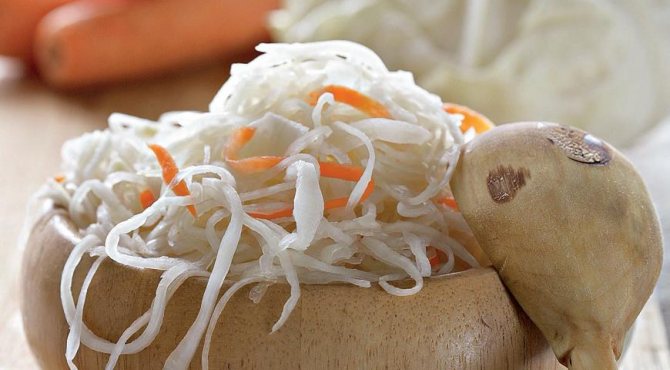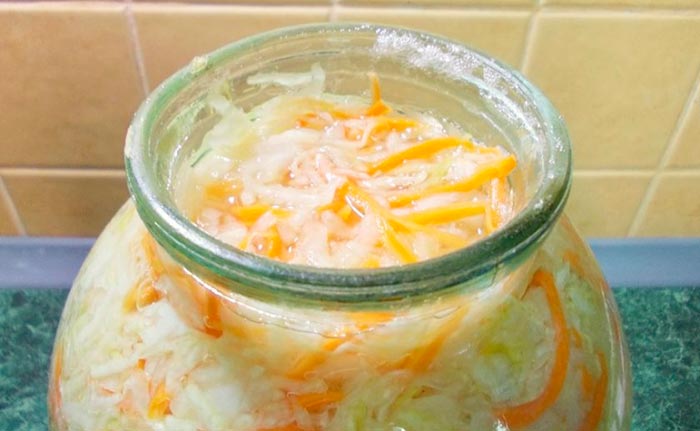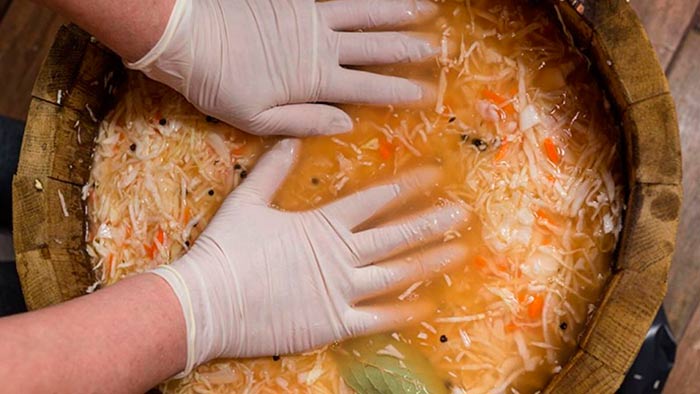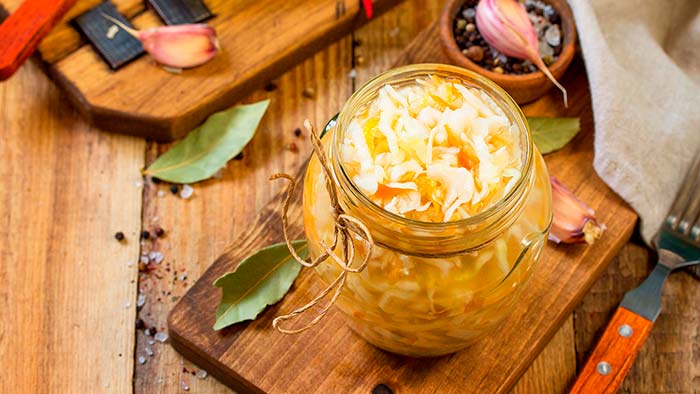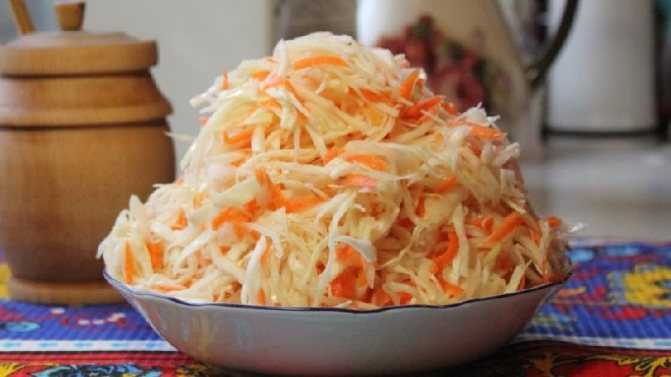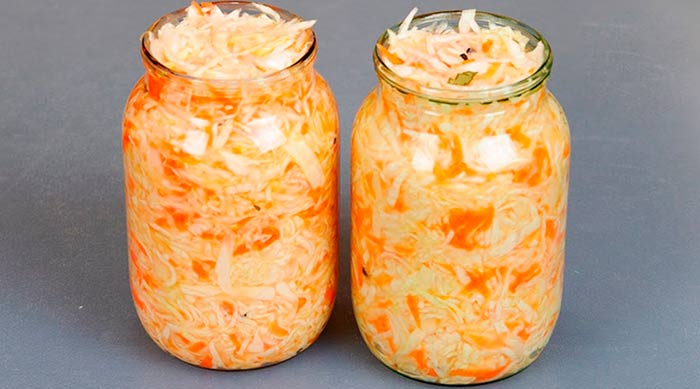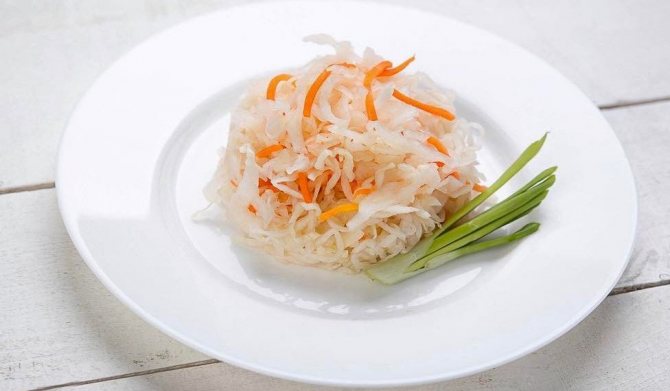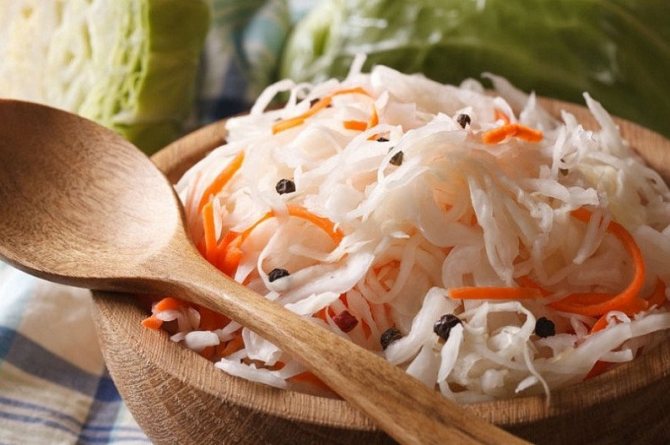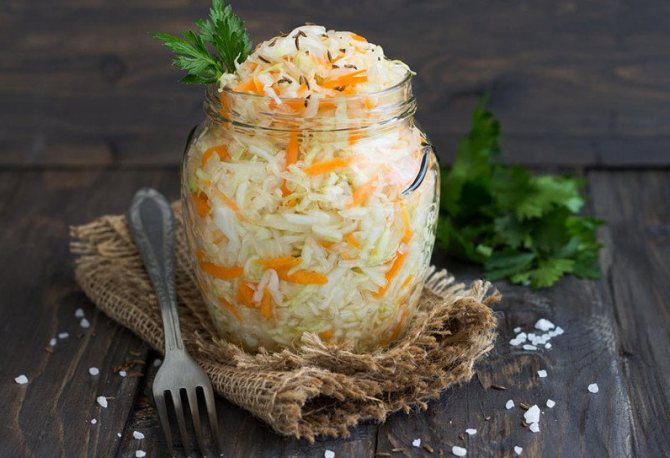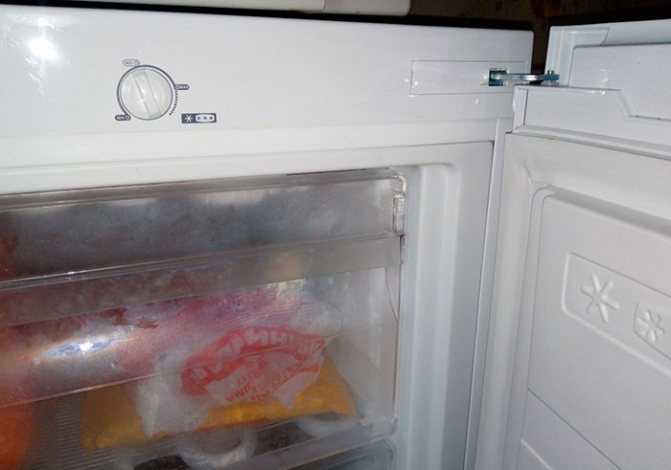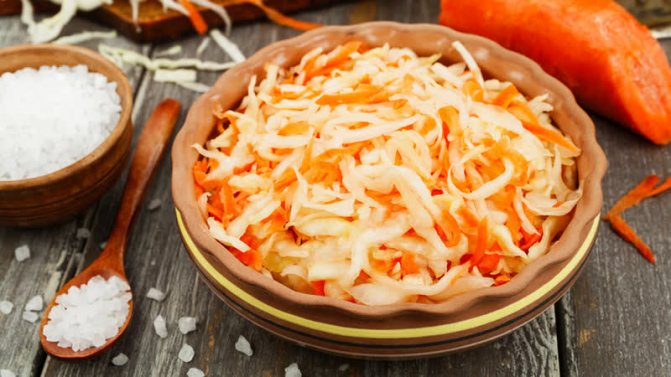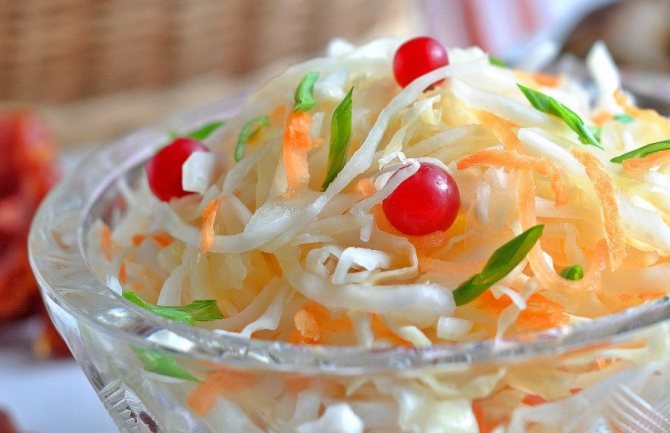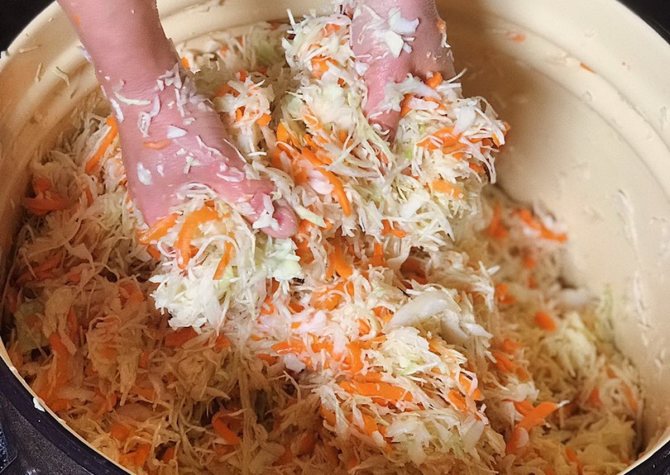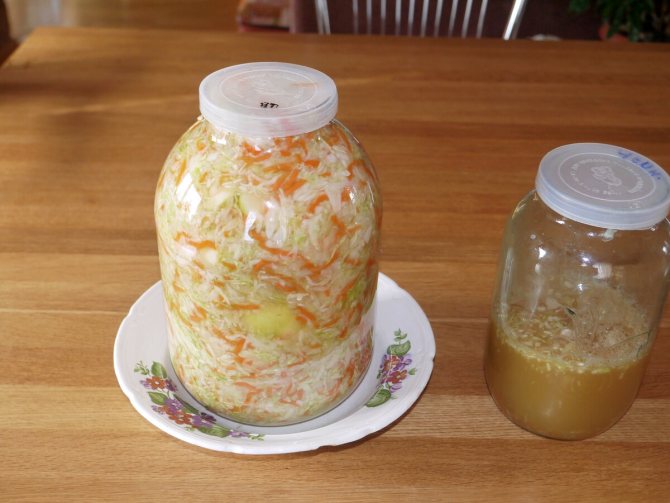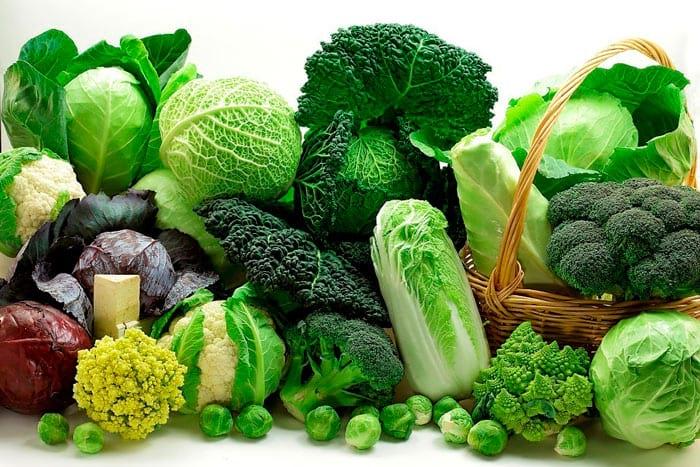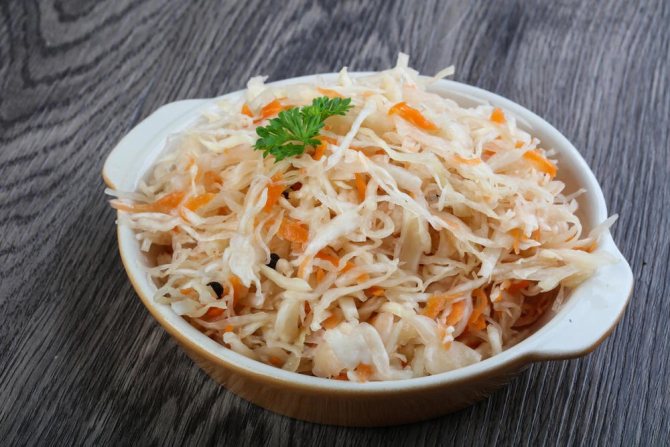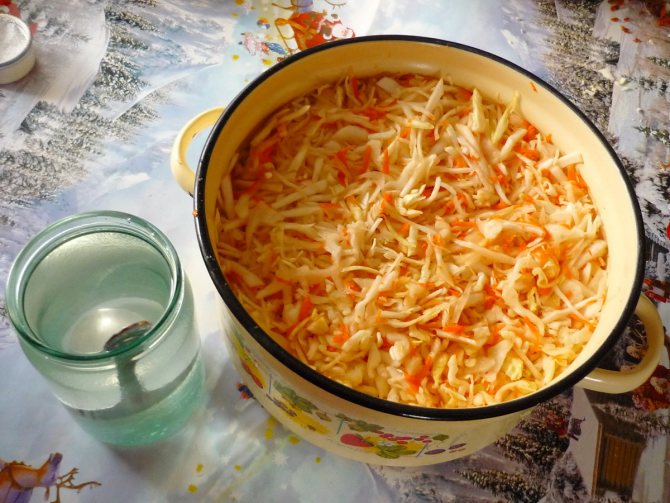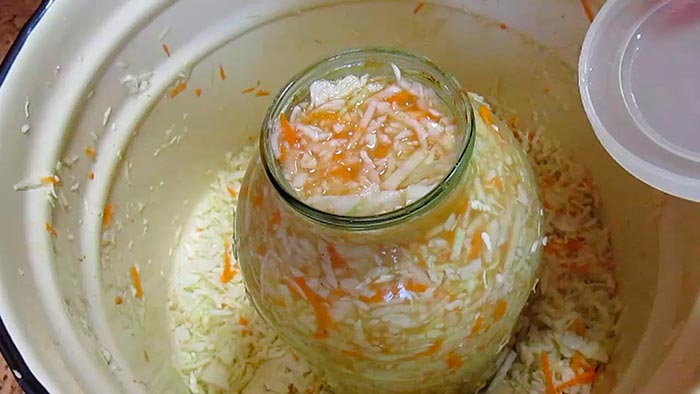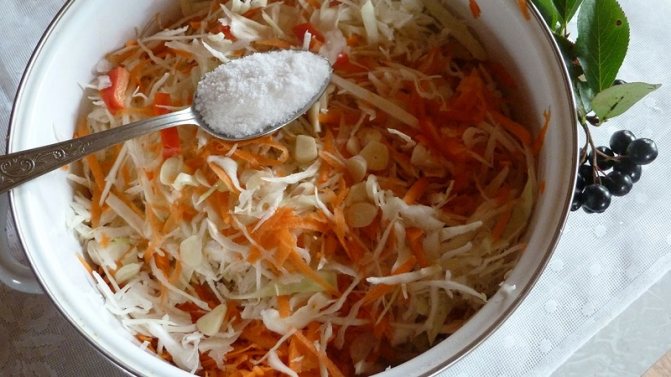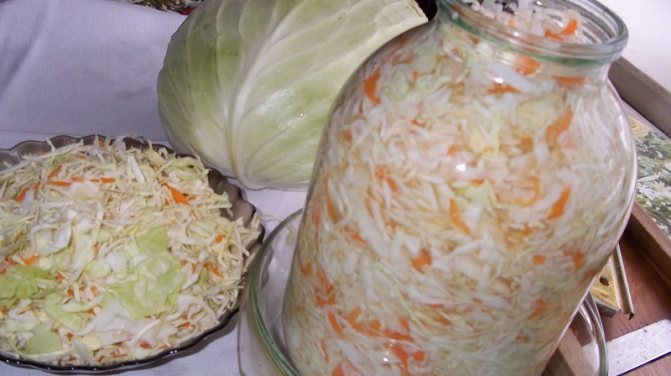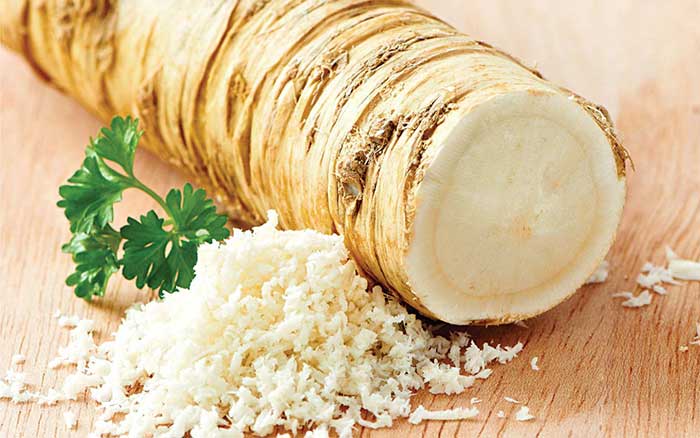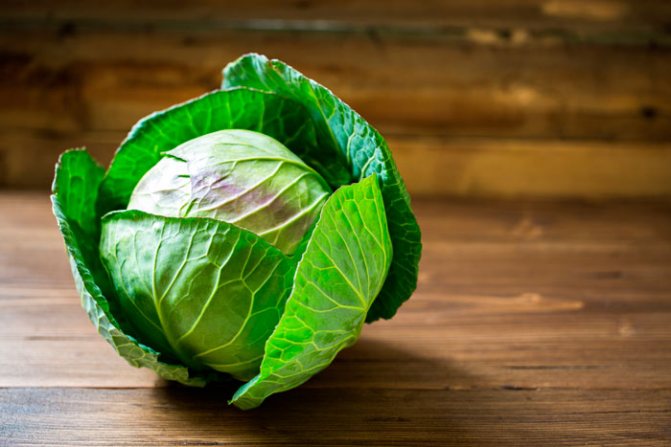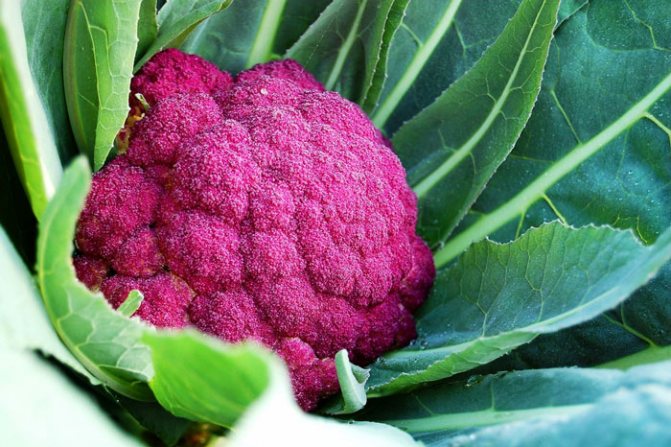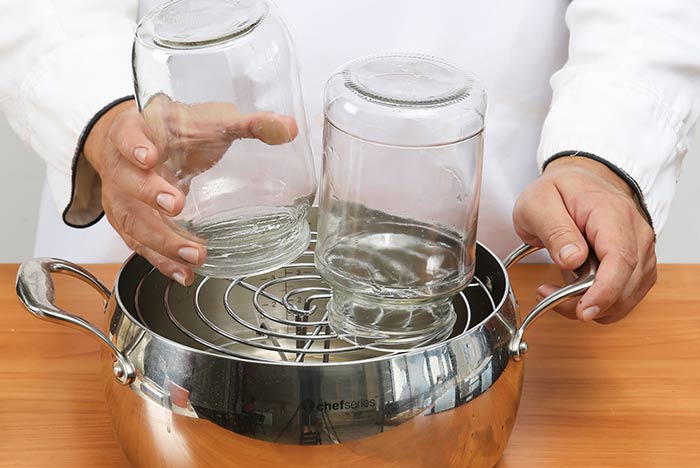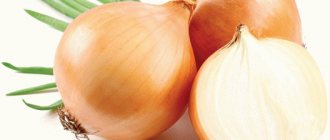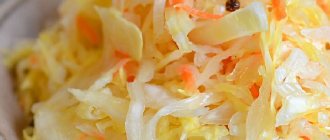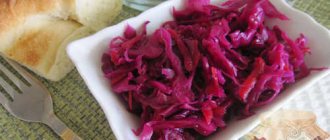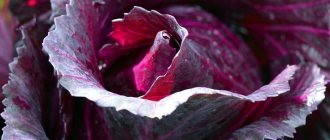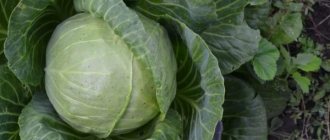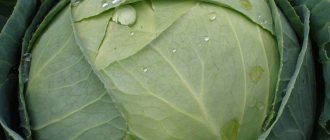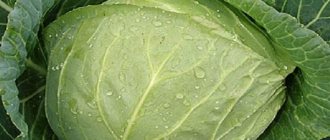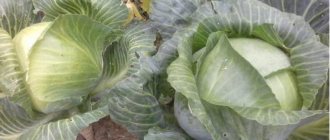Causes of bitterness
The billet takes on a bitter taste for several reasons.
- During the fermentation period, a large amount of gas arises, which cannot leave the cooking container. To avoid the accumulation of gases, it is often recommended to pierce with a stick made of wood, most often birch is used. If you neglect this method, salad and pickle become bitter.
- Little salt added during cooking results in a bitter taste. There is no need to deviate from the standard recipe with the calculation of 0.2 kg of spice per 10 kg of vegetables.
- The appearance of bitterness in cabbage is facilitated by the violation of the required temperature regime when the room temperature exceeds 20 degrees Celsius.
- Incorrectly selected starter salt. Be sure to use table salt. A common mistake is the use of iodized.
- If you decide to eat the cabbage before it is cooked, the taste will differ from the intended one. Before opening, completing the salting process, you need to check the appetizer for readiness. The finished product is different in color. The cabbage will be transparent and will take on a grayish tint.
These mistakes during cooking can lead to spoilage of the finished product.
The most common mistakes when pickling cabbage and their consequences
Lack of salting is one of the reasons why the dish does not work out. Other common mistakes also lead to sad results.
Choose a cabbage variety that is not suitable for pickling
To start the fermentation process, you need polysaccharides. In young cabbage and in heads of cabbage of late varieties, they are not enough. And often such a blank does not ferment, but dries up or rots.
Reference. Late varieties of cabbage accumulate polysaccharides as they are stored, so they are taken for fermentation no earlier than December.
Do not use oppression or opt for light oppression
The oppression is put so that the cabbage will allocate more juice for the brine. Its other purpose is to reduce the amount of air in which harmful bacteria live. Without oppression, the product may deteriorate.
Do not withstand temperature and fermentation time
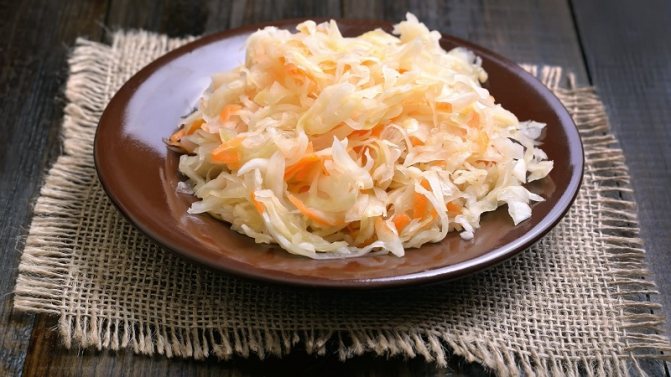
Fermentation takes place in three stages:
- Reproduction of lactobacilli: at temperatures from + 17 ° C to + 24 ° C for 2-3 days. The brine becomes cloudy, foam and gas bubbles appear on the surface.
- Lactic acid formation: 5-7 days at temperatures up to + 20 ° C. It inhibits the growth of microorganisms, and at the end of fermentation, no gases are released from the cabbage.
- Fermentation: in the refrigerator for several months. In a warm place, mold grows and the dish deteriorates.
Due to overexposure at the first stage, transparent mucus is formed in cabbage - the result of the multiplication of lactobacilli.
Important. Excessive temperatures during the fermentation stage lead to the growth of harmful bacteria and fungi. Cabbage darkens and becomes inedible.
If the product is placed in the refrigerator before fermentation is complete, it will have an unpleasant smell of lactic acid.
Use dishes that are not suitable for fermentation
Lactic acid reacts chemically with metal utensils. The resulting oxide darkens the cabbage.
Does not release gases from the product during the fermentation process
Gases are the result of active multiplication of bacteria. Because of them, cabbage acquires a bitter taste.
Iodized salt is used
Iodine is an active chemical element - under its influence, cabbage darkens and softens.
How to get rid of bitterness


It is difficult and not always possible to remove the bitter aftertaste from ready-made sauerkraut. You should try to take all possible measures to prevent the appearance of bitterness during the leaven.
- It is necessary to remove the "lid" from the container where the cabbage is located. Next, pierce the mixture about 10 times with a wooden stick. Excess gas will escape, which will eliminate the bitter taste. After the procedure, the jar is placed in a cool, dark place. It is advisable to get rid of gas several times during fermentation.
- It is also possible to immediately place a wooden stick in the center of the container, which will absorb the unpleasant aftertaste.
If the cabbage turns out to be bitter, you can improve its taste before eating. Adding snacks to soups will eliminate the unpleasant aftertaste. Rinsing with cold water will also help reduce bitterness, but can ruin the snack.
Important!Before serving cabbage on the table, it is recommended to ventilate it, occasionally stirring it up.
You can save cabbage by pickling it. First, juice is squeezed out of the workpiece, a small amount of sugar, vegetable oil and vinegar are added. For taste, fresh onions, chopped in half rings, are placed in the cabbage. After mixing the resulting mixture, you need to place it in glass jars and put it in a place with a temperature of about 15-18 degrees Celsius. Too low a temperature will negatively affect the quality of the finished product.
Preparing for storage until spring
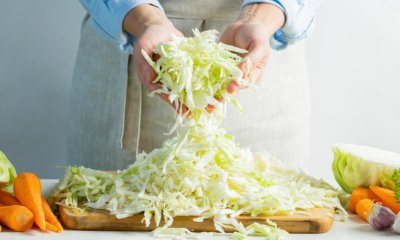

Most often, cabbage is fermented in large enough volumes.
In order to protect it from damage, and to preserve the maximum of useful substances, it is necessary to pay attention to a number of points.
Among them:
- selection of varieties and heads of cabbage;
- correct salting technology;
- prevention of mold and drying of the top layer;
- choice of storage location and containers;
- maintaining the necessary storage conditions.
Preventing the formation of mold
White bloom on the surface of some workpieces is associated with the appearance of a fungus. Even when removing it, one cannot be completely sure of the safety of the product.
The following techniques will help to avoid the appearance of mold:
- Sprinkle grated horseradish on top of the pre-packaged cabbage.
- Add sugar or mustard powder.
- When fermenting, add lingonberries or cranberries.
- If you use mustard seeds, it is best to pre-arrange them in small canvas bags.
Brine quantity: more or less?
When sending cabbage for storage, you should control that the entire harvest is covered with a layer of liquid.
Without brine, the top layer will darken and deteriorate. Organizing oppression can be a solution to a problem.
Salting preservatives: what to choose?
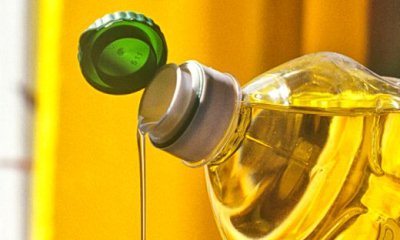

Long-term storage of the workpiece is able to provide natural preservatives. They are used as follows:
- pour a little vegetable oil on top of a container with a vegetable - just enough to cover the cabbage;
- add quite a bit of acetic acid;
- when fermenting, you can use more salt;
- sprinkle the top of the rammed workpiece with sugar.
Natural products that are safe for health can provide a good canning effect.
Advice
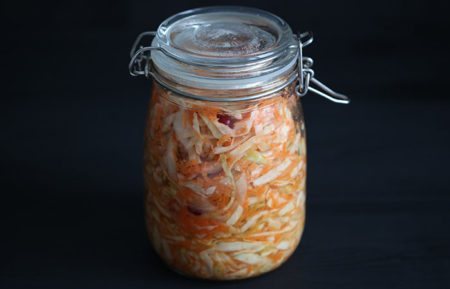

Compliance with these guidelines will help to achieve a good quality workpiece.
- It is recommended to use 3 liter glass jars as a container. So, the finished workpiece is quickly eaten and it does not have time to deteriorate.
- For the preparation of sauerkraut, it is recommended to take late varieties: "Slava", "Kharkovskaya Zimnyaya".
- It is necessary to release excess gas during the leavening period using a wooden stick.
- It is advisable to follow the recipe exactly.
Basic rules for salting cabbage
To make the appetizer tasty and retain the maximum amount of useful properties, you need to choose the right main ingredient and correctly carry out the salting procedure.
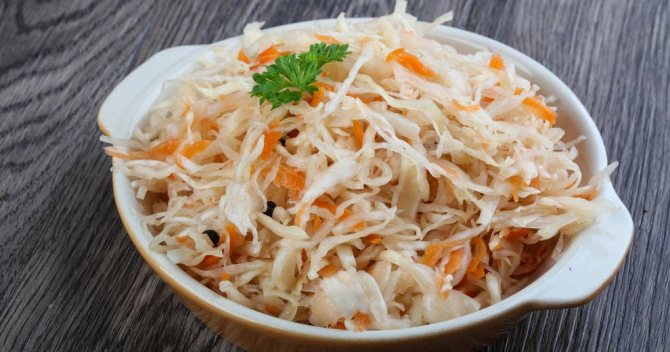

Cooking sauerkraut is carried out according to the following rules:
- Rinse the vegetable in cold water and let the head dry out of moisture.
- Before salting, peel the vegetable from the upper leaves and cut the stump.
- Cut the head of cabbage into 4 pieces and finely chop each of them with a knife into strips of 0.5 cm wide, so that the vegetable pieces are better saturated with salt, but remain crispy.
- Mix the cabbage and salt in a wide bowl to ensure that the salt is evenly distributed throughout the mass.
- While mixing, it is recommended to slightly press down the mass with your hands to stimulate the formation of a sufficient amount of juice.
- For salting, you need to use a clean container of a suitable size, which does not have any foreign odors. Glass jars are best suited for this purpose.
- You need to put the chopped vegetable in jars in layers and tamp each of them tightly with your hands.
- When the jar is almost full (2–3 cm left to the top), you need to cover the neck of the jar with a plastic lid, leaving a hole for air to enter.
- Put oppression on the top layer of cabbage in a jar - a glass of water or a large apple.
- During fermentation, a jar of pickles should be kept in a warm room with an air temperature of about + 18 ... + 20 ° С. This process takes about 3-5 days.
- As fermentation proceeds, foam will form in the container, which must be removed.
Important! It is necessary to take out sauerkraut to a cool place only after the fermentation process is over and foam stops forming in the jar of pickles.
Recipe
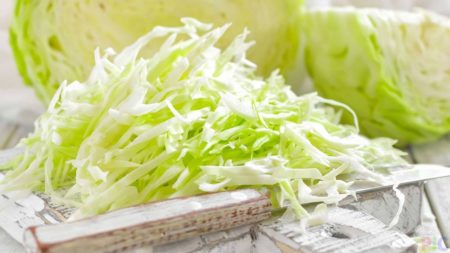

To achieve a taste without bitterness, you do not need to deviate from the chosen cooking recipe, follow the advice and study possible mistakes in advance in order to prevent them. For the "original" recipe you will need: fresh cabbage, beets, carrots, sweet before, garlic, dill, salt. The recipe with the addition of lavrushka assumes the ingredients: cabbage, carrots, bay leaf and salt.
To prevent the possible appearance of bitterness, preparation is as follows:
- Finely chop cabbage and other vegetables with a knife or a specialized grater.
- Place in a bowl or large bowl. In this case, each layer must be sprinkled with table salt.
- Next, mix the contents of the container with your hands, kneading and pressing the cabbage.
- If necessary, add other spices and stir the mixture additionally.
- The next step is transferring to pre-prepared jars and sealing them.
Important!Recipes often use ingredients such as apples, cranberries, honey. Sauerkraut is used as a salad with various side dishes. Used as a filling for pies, dumplings. It is added to other salads in addition to being consumed as a separate dish.
What happens if you undersalt cabbage with sourdough
Fermentation occurs as a result of lactic acid fermentation. Lactobacilli convert the sugar contained in vegetables into lactic acid, which activates vitamins and prevents the growth of putrefactive bacteria. Salt is not required to trigger this chemical reaction. There are recipes for salt-free sauerkraut, but you have to get used to this dish.
Attention. When added to chopped vegetables, salt acts as a catalyst in the fermentation reaction. It causes plasmolysis of cells and promotes increased juice secretion - a brine is formed, in which lactobacilli and other microorganisms multiply. In salt-free recipes, the role of the nutrient solution is played by the water added to the workpiece.
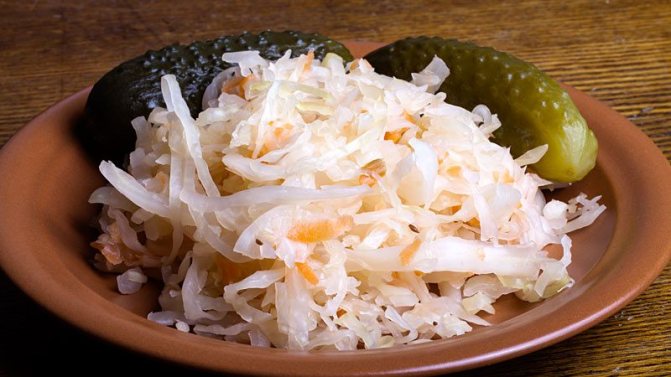

If the technology is followed, on the second day, the brine should completely cover the vegetables. As it evaporates, the number of bacteria increases.Salt residues and lactic acid formed by lactobacilli inhibit the growth of other pathogenic microorganisms - as a result, the product does not rot, but is preserved.
Important. With a lack of salt, little brine is formed - the cabbage left without it will dry out or rot.
Can I add more salt later
The workpiece is salted before the start of the fermentation process, that is, until foam and bubbles appear. Salt added later blocks the growth of lactobacilli. As a result, cabbage is not fermented.
Topping up is done in one of two ways:
- add salt and mix thoroughly;
- add ready-made brine at room temperature: 1 liter of water, 1 tbsp. l. salt and sugar.
If you add salt too late, the oppression is increased so that more juice is released. Or they use this cabbage for the first and second courses, and for salads they ferment a new batch.
The benefits of sauerkraut
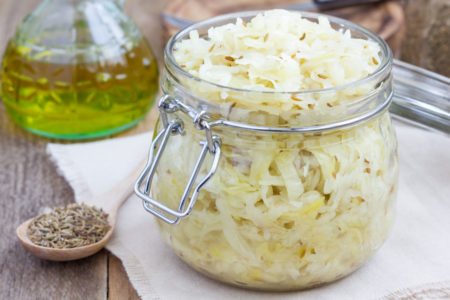

The amount of vitamin C in the product increases after it is leavened. Sauerkraut has beneficial properties:
- strengthening the heart muscle;
- improvement of metabolic processes;
- prevention of colds;
- helps to strengthen the nervous system;
- increases resistance to stressful situations;
- lowers cholesterol levels.
Recommended to be added to the diet in the winter.
Freezing
It should be immediately noted that the process of freezing and subsequent defrosting of sauerkraut destroys a significant part of vitamin C. Therefore, if freezing is an urgent measure, the product should be eaten immediately after it thaws.
If this does not work, for example, due to the large volume, then it is strongly not recommended to re-freeze the product. If you decide to freeze the cabbage, then it is advisable to freeze it along with the juice or brine that has come out. Or at least keep the brine in the bottle. Why? More on this later.
Testimonials
Evgeniya, 64 years old.
Every year I pickle cabbage in three-liter glass jars, never ready-made it tastes bitter. I do not forget to remove excess gases and always follow my old recipes. Guests and relatives - everyone says that the cabbage comes out delicious.
Anastasia, 67 years old.
Every year I cut down all the heads of cabbage before frost, they say that this affects its taste. If I don't have time, then I try to remove everything on the first day of frost. I follow the fermentation process carefully, before serving it to the table, I always check if it is ready. Usually it comes out tasty, and if it tastes a little bitter, then I use it for borscht and cabbage soup.
Do you need a pickle?
Sometimes housewives drain the brine from sauerkraut and store pickles without brine in the refrigerator. In no case should this be done. Storing sauerkraut exactly in brine it is necessary forto keep vitamin C from degrading quickly. Therefore, it is worth making sure that the cabbage only gets into the brine.
If stored without brine, the end consumer is unlikely to be able to notice significant changes in the taste of the product. However, salting will become much less useful than it was originally. Stored without brine, the product in question inevitably loses its usefulness for the human body. This means that cabbage should be removed from the brine immediately before eating.
The same vegetable that remains in the container must be pressed well so that all of it is immersed in the brine. For this, it is advisable to use oppression. A can of water placed on a plate can act as it.
Storage utensils
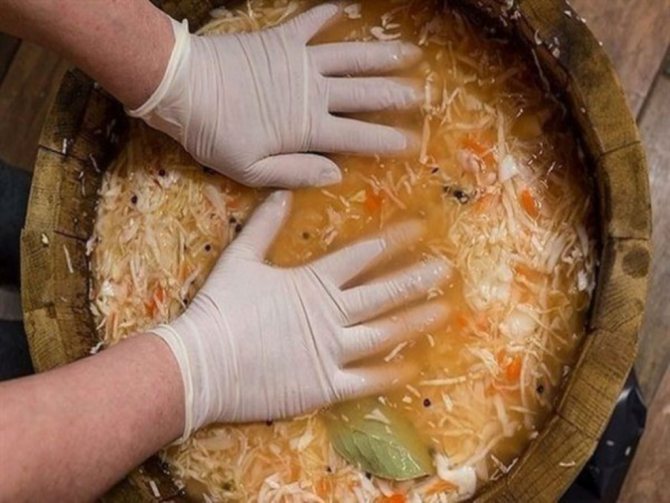

How much sauerkraut can be stored in the refrigerator or elsewhere depends on the container in which it is kept. Previously, only oak barrels or other, smaller containers were used for this, but now there are more types of suitable utensils for storing. Moreover, if you choose wooden containers for storing the product, it must be taken into account that the material can give its aroma to the workpiece.Therefore, if the dishes are old, the sauerkraut will have an unpleasant aftertaste.
The best container for storing a product is one made of glass or ceramic. Such dishes do not actually absorb foreign odors in comparison with wood. At the same time, an unsuitable choice is a container for storing sauerkraut made of steel or aluminum. The product will receive some metallic aftertaste, which will significantly spoil its original taste characteristics. If there is no other besides metal dishes, then you need to choose an enamel one, on the coating of which there is no damage - chips, cracks.
Benefit and harm
- A fermented product has great benefits for the whole human body:
- helps the immune system to function well;
- prevents premature aging;
- regulates digestion;
- the contained potassium is involved in the regulation of water and acid balance.
- Despite all the benefits of the product, it has a number of contraindications and can, in certain cases, harm the human body:
- those who suffer from hypertension or gout should limit themselves in the use of this product, because it contains a large amount of salt;
- sauerkraut slows down the absorption of iodine, which is why people with thyroid problems should consult with their doctor before starting to consume this snack;
- provokes bloating and diarrhea.
Which cabbage is bitter
Any vegetable can be bitter - fresh or cooked.
Fresh
Bitterness in a young fresh vegetable is often caused by the characteristics of the variety or a violation of the timing of the harvest.
Late species are harvested only after the arrival of frost, because early cutting does not allow it to fully mature. Unfavorable growing conditions - drought and heat - have a negative impact on taste.
Pickled and salted
The main reasons for the appearance of bitterness in sauerkraut and salted cabbage is a violation of the cooking technology, in which fermentation and salting are not active enough, which provokes the intensive appearance of pathogenic microorganisms that cause an unpleasant aftertaste.
Frequent mistakes:
- ignoring the piercing of the cabbage mixture to release the accumulated gases that appear when the vegetable juice interacts with salt;
- exceeding the required amount of salt, which prevents normal fermentation, which occurs as a result of the vital activity of beneficial acidic bacteria, which slow down their development in a salty environment;
- lack of salt, which creates favorable conditions for the reproduction of bacterial microorganisms;
- unsuitable variety for pickles.
Some cruciferous species tend to accumulate a bitter enzyme.
White-headed
Dry summers can cause bitterness
Most often, white cabbage is bitter. The reason lies in the varietal tendency to accumulate the greatest amount of glycosides. Additional provoking factors are cultivation in dry summers, accompanied by occasional watering.
Brussels and colored
Together with the white cabbage, due to the peculiarities of the variety and the increased propensity, the color and Brussels sprouts are at risk for the appearance of bitterness.
Beijing and Chinese
These varieties are not prone to bitterness accumulation. They have an unpleasant taste only when the technology of cultivation and storage is violated.
At the same time, Chinese has a mustard flavor that is not similar to bitter.
Iceberg
The Iceberg variety begins to taste bitter when grown in hot conditions, because plant culture prefers coolness. At high ambient temperatures, the plant enters the ripening stage, releasing the stem and inflorescences, and the edible leaves acquire a bitter taste.
Savoy and Red
Wormwood flavor is more often associated with the immaturity of the vegetable and a large amount of accumulated growth stimulants of chemical origin.These varieties have a chemical composition similar to that of white cabbage and begin to taste bitter also if the timing of cutting is not observed. Some subspecies of Savoy cabbage are bitter and this is a natural process.
Broccoli
Timely harvested broccoli has a mild flavor. An overripe frozen vegetable becomes bitter when cooked.
Nutritional value of the product
Sauerkraut has a high nutritional value, since it is this cooking method that preserves the maximum amount of nutrients.
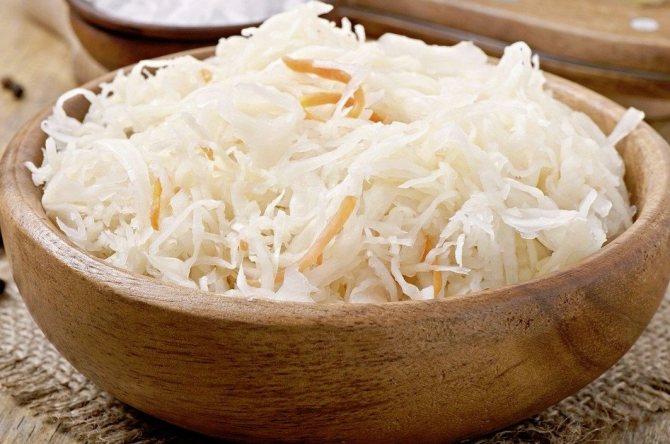

In addition to a large amount of vitamins (A, B1, B2, B5, PP), 100 g of the product contains:
- proteins - 1.6 g;
- fats - 0.1 g;
- carbohydrates - 5.2 g;
- dietary fiber - 4 g;
- starch - 0.2 g;
- ash - 0.9 g;
- organic acids - 79.2 g;
- mono- and disaccharides - 5 g;
- saturated fatty acids - 0.009 g
Did you know? Traditional medicine ascribes truly healing properties to sauerkraut. Traditional healers recommend using a fermented product and juice from it literally for any disease, from a common cold to such serious diseases as epilepsy and bronchial asthma.
Place of storage of fermented product
It is believed that a cellar or basement is a suitable place for storing sauerkraut and other pickles. This is due to the fact that in the basement the temperature regime is optimal to preserve the freshness of such products. Also, sunlight does not enter the underground, contact with which is contraindicated for pickles, since under the influence of ultraviolet radiation they begin to rapidly deteriorate. In addition to the above, in a good cellar or basement and the air humidity indicators are optimal for keeping the pickles fresh.
However, there are also downsides to storing sauerkraut in a basement. So, if pickles are kept underground, the likelihood of developing mold is higher. And you can't send sauerkraut to the basement or cellar in the case of an apartment. In this situation, a glazed balcony, loggia or refrigerator is a good place to store pickles. It is also permissible to keep sauerkraut in a cool pantry. At the same time, in a warm room, where the temperature is above + 18˚ C, the product is introduced in portions - on a one-off basis. The remaining cabbage, if the entire volume brought was not eaten immediately, is not put back into the brine - it is stored separately from the main volume of the workpiece, in the refrigerator.
Cellar storage
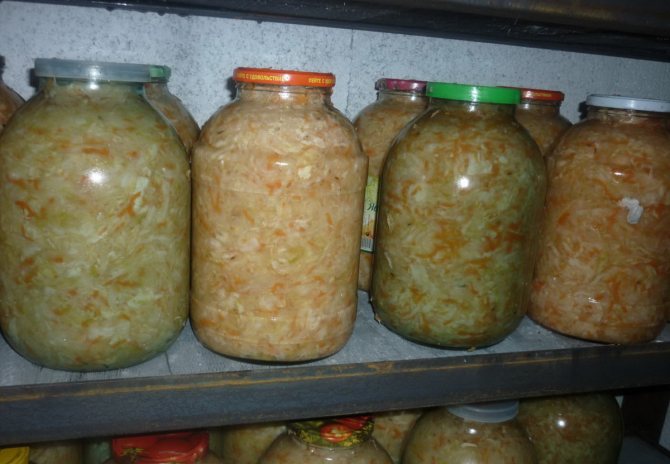

You can store pickles underground for a long time, especially when sauerkraut is spread out in glass jars, which are sealed with metal lids. However, it is impossible to completely fill the jar with the product - there should be no contact of pickles or brine with metal. In the autumn-winter season, as well as in early spring, sealed jars will keep the product fresh well. But, with the onset of summer, the maximum shelf life of sauerkraut is approximately 1 month, since the temperature in even a well-buried subfield does not drop less than + 7˚ C.
In addition to sealed jars, salting can be stored in enameled buckets or pans, the lids of which fit tightly. If there is no lid, then bending is done - a plate or lid is placed on top of the product, which will press the pickles due to the jar of water placed on top. It is also permissible to keep sauerkraut in ceramic barrels, but it is important to check that the container is clean. In the case of wooden dishes, no third-party odors should come from it, since pickles will absorb them, which will spoil the taste of this product.
On a note! When sauerkraut is kept in an enamel bowl, it is important that there is no damage to the enamel, since pickles will oxidize in case of direct contact with metal and its shelf life will expire faster.
In the apartment on the balcony
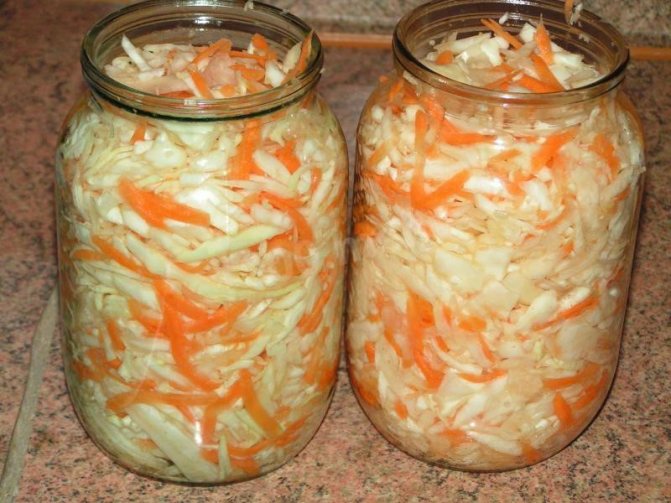

In an apartment environment, you can also choose a place for storing sauerkraut, in which its shelf life will be as long as possible.Since there is no subfloor, pickles are often sent to the refrigerator. Nevertheless, when a lot of sauerkraut is cooked, it is impossible to place its entire volume in the refrigerator. In this situation, the pickles are left on the balcony - if it is glazed and insulated enough so that there is no minus on it.
Also, it is permissible to send sauerkraut to an unglazed balcony, but in this case it is recommended to pack it in portions. This is due to the fact that in the case of subzero temperatures, the pickles will be frozen, and they cannot be re-exposed to such an effect. Also, one must take into account that already frozen fermented milk is worse and its maximum storage time at a temperature of + 1 ... + 4˚ C does not exceed 1-4 days.
Nevertheless, it is not recommended to leave pickles even on an unglazed balcony in the climate of the southern regions. This is due to the relatively mild winter, since the temperature outside and, accordingly, the balcony, can rise to + 7 ... + 10˚ C. Such a thermometer mark does not increase the storage time of pickles. At the same time, there is also no temperature stability in winter - the mark of the thermometer changes from plus to minus values. Multiple frosts have a negative effect on the condition, texture, taste and shelf life of sauerkraut.
Storage in plastic containers
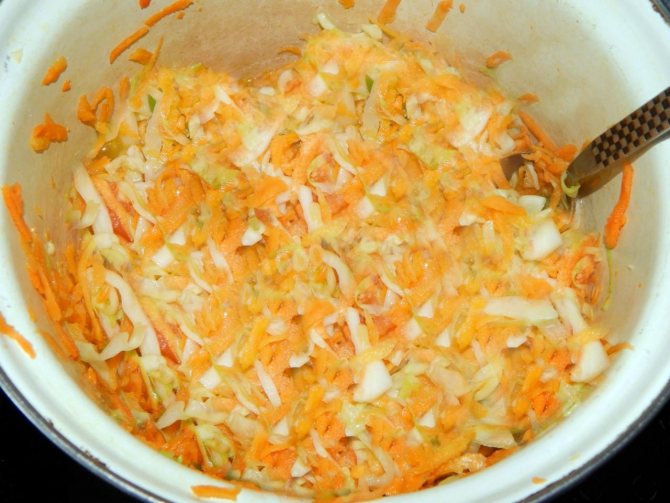

When storing blanks prepared according to the fermentation method, you can use polymer dishes. But, it is also imperative to take into account the peculiarities of the compositions and the reduced period. If there is no label on the container, then there is a high probability of using melamine - such dishes are toxic. Low hazard plastic is marked PP (PP - polypropylene) - this material is often made of utensils for feeding children and food containers. Also, the following marks are suitable for storing pickled chopped cabbage leaves:
- HDPE (HDPE - low pressure polyethylene);
- PET, PETE (PET - polyethylene terephthalate);
- OTHER (Other - the spoon and fork are important).
It is impossible to use PVC containers (V, PVC - polyvinyl chloride) for acidic billets - a toxic material that is applicable only for technical purposes. When freezing, it is categorically not recommended to use containers with PDV markings (LDPE - low-density high-pressure polyethylene). You can put the sauerkraut in boxes marked as PS (PS - polystyrene), but we must not forget about negative vapors when heating such a container.
On a note! When choosing quality plastic for food use, pickles can be stored longer than in enameled dishes. But, such containers must be tightly closed and kept in a cool place.
Bank storage
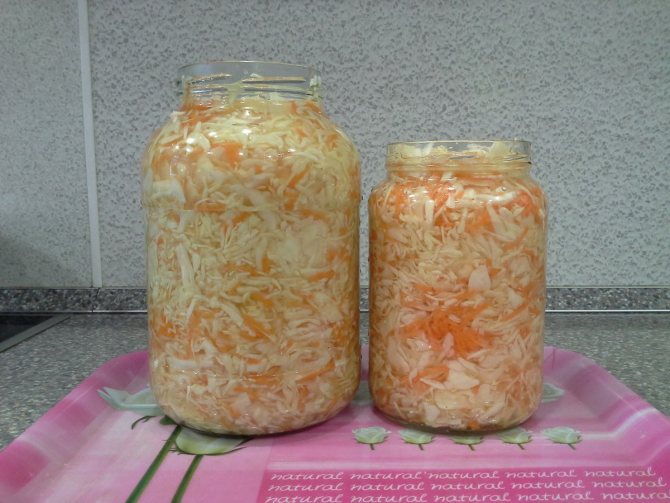

Glass is one of the most inert materials, so long-term storage of an acidic product in such a container is possible. Containers made of this material must be checked for integrity before use, especially in the area of the neck. Glass jars, before placing a chopped sheet in them, be sure to rinse with a soda solution and sterilize with steam or warm up in a convection oven.
Such a container must be closed with a dense polymer lid intended for conservation - they fit more tightly and must be heated before closing. You need to be careful with glassware with the product - it is easy to break jars by accident. Also, with long-term storage on the balcony, the temperature regime must be taken into account - if it is frosty outside, then it is better to remove the vessel with sauerkraut in a warm place.
Sauerkraut in the warmth
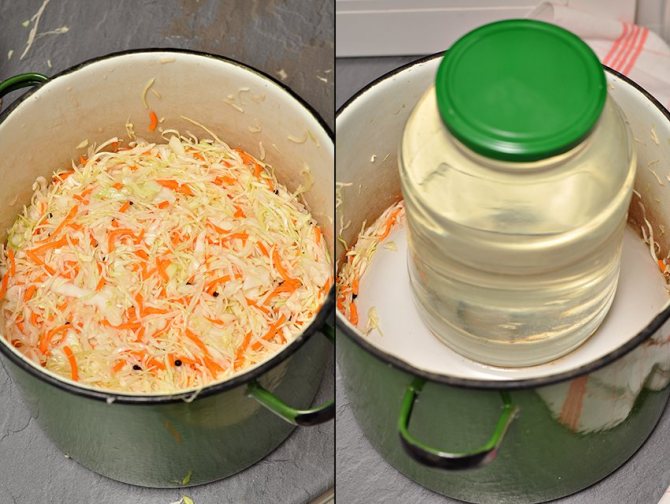

Storing an acidic product in a warm room is questionable, but possible. A tightly covered jar of cabbage can be left in the kitchen or in a warm room without spoiling it right away. But, in order to extend the shelf life and preserve the taste and useful components, it is imperative to update the brine with one of the main preservatives - sugar.It needs to be poured on top at intervals of 2-3 days.
Such an additive in an acidic fermentation environment, under the influence of bacteria, is converted into acid. But, when storing warm, it is imperative to monitor the general condition of the product and take into account the risks of developing mold. When food is acidified, sugar can also correct the taste. On a large plate, just add 1-2 tsp. granulated sugar and mix well. It will not be possible to restore density, but the taste of the product will be normal.
Attention! It will not work to save pickles that already have mold - fungi are rapidly spreading their spores into the through and such cabbage will simply have to be thrown away.
Freezing cabbage
The preparation of such pickles includes fermentation processes, therefore, when using freezing as a method of preserving this useful product, one should not forget about the characteristics of microorganisms. When the ambient temperature drops to below 0ºC, the bacteria causing the fermentation process not only slow down their activity - they die and do not recover after defrosting.
To preserve all the beneficial qualities of a leafy vegetable, it is recommended to first drain the brine into a separate bottle and store it simply in the refrigerator. After defrosting a portion of pickles, it is rinsed in liquid and served on the table. Freeze in small portions so that the product can be eaten at a time. It cannot be re-frozen.


